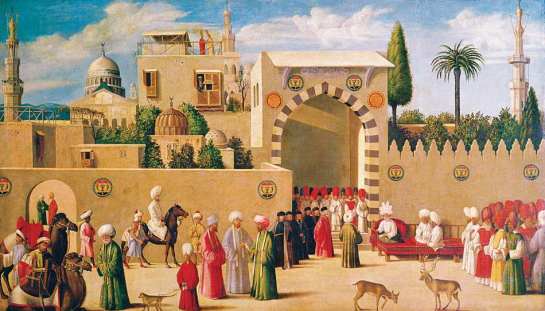
La réception des ambassadeurs vénitiens à Damas (Anonymous artist, 1511, Musée du Louvre)
Ghent University (Belgium) is starting up a digital humanities project for the development of a data-infrastructure for the study of late medieval Syro-Egyptian elites, their networks, and their social and cultural practices, including their textual production and consumption (13th-15th century).
This Mamluk Prosopography Project (MPP), which will build on the achievements of preceding prosopographical projects, will be developed as a new application with web-based multiple user-, input- and analysis functionalities. MPP’s development is scheduled to be achieved between 2016 and 2020, and will be funded by the Research Foundation Flanders (Medium-Size Research Infrastructure), and by the European Research Council.
We are currently starting up the required public tender procedures to inform potential candidates in the private sector of this opportunity. The contract for this development project will be awarded via a European negotiated e-tender procedure with publication of a contract notice. The selection guideline for application was published earlier this week, and may be accessed via https://enot.publicprocurement.be, ‘search for publication’, ‘dossier number’: 16OMB003.